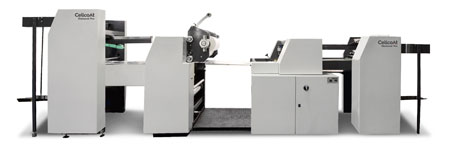Your Laminator:
If your laminator delivers an adequate amount of pressure during the process, you can often use a standard film on a digitally printed job. Good pressure compensates for a weaker adhesive.
Your Press:
Depending on the type of ink/toner your press uses, this can influence your decision to use a
standard or digital film. Typically, Some presses have fuser oil in the toner. Which makes sticking to the ink more of a challenge so digital or Printaply Pristine Ultra film is recommended. Other digital presses use a more waxy toner which is easier to stick to so in some cases, a standard thermal film is ok.
Your Job:
Things to consider about your job….
Whats going to be done with the sheet once laminated?
- If it’s a standard A4, A5 flat sheet or a business card, a standard thermal film may be ok.
- If the sheets are creased and folded, or going to be turned into a hard cover or brochure, there maybe a tendency for the film to lift where the creases are, so you may wish to consider a digital film for peace of mind.
How much ink coverage is on the sheet?
- A heavy ink coverage on the sheet (particularly dark solids) can be more challenging to stick to. If a digitally printed sheet has a small amount of ink coverage, the adhesive can bond directly to the paper so a standard thermal film can be used in some cases.
How thick is the stock?
- Generally, thinner stock can be laminated using a standard film because less rigidity in the board means less resistance when creased of folded.
- Thicker material can sometimes cause the laminate to “pop off” when folded.
How Long can I leave the Job before being laminated?
This one is a challenge in today’s fast paced print market! In some cases, if the printed material can be left overnight, this allows unwanted fuser oils etc… to dissipate giving film a better chance of sticking.









